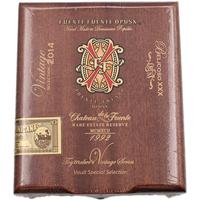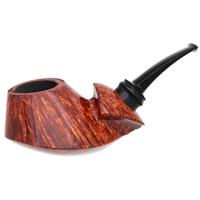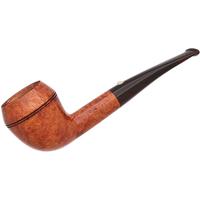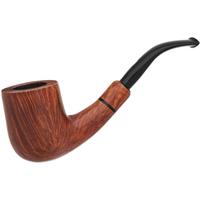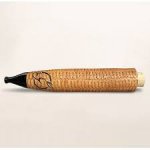Reverse Calabash
- Thread starter LOREN
- Start date
You are using an out of date browser. It may not display this or other websites correctly.
You should upgrade or use an alternative browser.
You should upgrade or use an alternative browser.
SmokingPipes.com Updates
- Status
- Not open for further replies.
100% humidity makes a mockery of drying.If they were drying, packing, and smoking right, they wouldn't need one.
Food dehydrator.100% humidity makes a mockery of drying.
Edit:Where, I need to live there!
It should also be noted, regardless of origin, calabash is also considered a shape even without removable bowls or secondary chambers.
It doesn't matter how dry the tobacco is when you put it in the bowl. Once you step outside the ambient humidity promptly takes the moisture levels in the bowl right back up, if it hasn't rehumidified by the time you get it lit it will once you start puffing. It's not like that all the time, but it's like that an awful lot of the time.Food dehydrator.
Makes coloring meerschaums a doddle though.
Houston. between two bayous, and about 200 yds from the reservoir.
hmm, maybe a reverse calabash meerschaum is in my future.
I'm on a big IMP kick right now and they make some nice ones.?hmm, maybe a reverse calabash meerschaum is in my future.
I decided to skip it since I already have coloring bowls which do the same thing.I'm on a big IMP kick right now and they make some nice ones.?
Could a Peterson Mark Twain bent be considered a reverse calabash?
Reverse Calabash basically means it has an air "cooling" chamber in the shank portion of a pipe. Peterson system pipes kinda have altered/mini version of it but not for the reason Reverse Calabashes are intended. Shape is independent of being branded as such. Olkofri's video is perfect. As long as it has that chamber it meets the definition.
The volume of the cooling chamber makes the difference and is why a System pipe is not a reverse calabash.As long as it has that chamber it meets the definition.
So what's the reason "reverse calabash" pipes have it, and what is the reason Peterson system pipes have it?Reverse Calabash basically means it has an air "cooling" chamber in the shank portion of a pipe. Peterson system pipes kinda have altered/mini version of it but not for the reason Reverse Calabashes are intended. Shape is independent of being branded as such. Olkofri's video is perfect. As long as it has that chamber it meets the definition.
The Peterson system is designed to condense moisture from the smoke that gets dropped into the well to be disposed of later. The cooling chamber in a calabash of either type is supposed to cool the smoke by allowing it room to circulate before going through the mouthpiece. It’s not really a moisture trap though by it’s nature can pull some out.
Same as stingers and inner tubes, marketing.So what's the reason "reverse calabash" pipes have it, and what is the reason Peterson system pipes have it?
I feel Reverse Calabashes do as claimed. Compare a short pipes' smoking characteristic to a RC of equal length. There is a difference
There are three ways to move thermal energy: conduction, convection, and radiation. Peterson System pipes use the ideal gas law to precipitate the steam to a liquid then the heat transfers to the briar via conduction. How do gourd calabashes and reverse calabashes do this? "Circulate" just says the smoke moves around, it doesn't really explain how this results in it getting cooler. Convection ovens also move air around in a large chamber but usually don't cool down the food.The cooling chamber in a calabash of either type is supposed to cool the smoke by allowing it room to circulate before going through the mouthpiece.
The amount of time within the chamber allows for the cooling."Circulate" just says the smoke moves around, it doesn't really explain how this results in it getting cooler.
And contact with cooler air in the chamber and surface of the cooling chamber. Traditional gourd calabashes have a large cooling chamber and the gourd absorbs some of the moisture that might be steam.The amount of time within the chamber allows for the cooling.
I too think they do cool the smoke a bit. However, after being bitten by my Curvy, I also believe that their nosewarmer dimensions partially negate the cooling effect. I get less bite with my churchwarden, what with its filter plus long stem and all.I feel Reverse Calabashes do as claimed. Compare a short pipes' smoking characteristic to a RC of equal length. There is a difference
The amount of time within the chamber allows for the cooling.
Somehow the heat has to go somewhere besides up the stem, which is the physics problem I am trying to wrap my head around. I know how the system pipes and the regular gourd calabashes do it (they both precipitate the steam, removing the heat in the water from the smoke) but I don't see the physics principle that makes the reverse calabash work without also condensing the steam. it doesn't matter how much time the smoke spends within the chamber if there is no good route for the heat to escape, and I'm just not seeing one. Wood and lucite are both thermal insulators, and thermal conduction from a gas to a solid (e.g. briar) is notoriously inefficient. so gas to solid conduction doesn't seem like it's a likely candidate (also the high volume to surface area ratio in all the reverse calabash designs are all wrong for conduction anyway).
And contact with cooler air in the chamber and surface of the cooling chamber. Traditional gourd calabashes have a large cooling chamber and the gourd absorbs some of the moisture that might be steam.
The large chamber is helpful if the design is leveraging the ideal gas law PV=nRT, or in this particular application T2 = T1(V2/V1). and system pipes with larger condensation chambers like the gourd calabash and Peterson House pipe all exhibit better cooling properties. The absorbency of the gourd and meerschaum also help .
But if the pipe isn't using condensation as the primary means of cooling the smoke, as is being posited for reverse calabashes, then a chamber with a large internal volume and relatively small surface area and insulating, non-absorbent walls is not going to do a whole lot. Volume goes up roughly by r^3, surface area goes up by r^2 - the larger the chamber the lower the percentage of gas that will contact the walls, or the shorter the contact time. Neither is a good way to cool the smoke.
- Status
- Not open for further replies.



